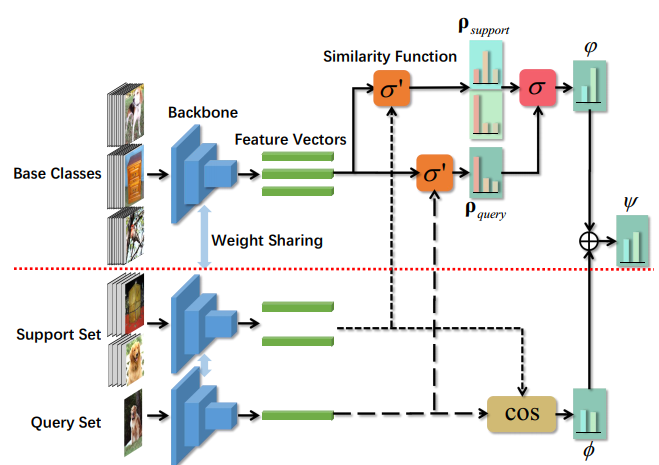
The approach of CBM
1State Key Laboratory of Virtual Reality Technology and Systems, SCSE, Beihang University, Beijing, 100191, China
2School of Electronics Engineering and Computer Science, Peking University, Beijing, 100871, China
3Beijing Advanced Innovation Center for Big Data and Brain Computing, Beihang University, Beijing, 100191, China
4Peng Cheng Laboratory, Shenzhen, 518066, China
ACM MM 2020
Code

The approach of CBM
Given base classes with sufficient labeled samples, the target of few-shot classification is to recognize unlabeled samples of novel classes with only a few labeled samples. Most existing methods only pay attention to the relationship between labeled and unlabeled samples of novel classes, which do not make full use of information within base classes. In this paper, we make two contributions to investigate the few-shot classification problem. First, we report a simple and effective baseline trained on base classes in the way of traditional supervised learning, which can achieve comparable results to the state of the art. Second, based on the baseline, we propose a cooperative bi-path metric for classification, which leverages the correlations between base classes and novel classes to further improve the accuracy. Experiments on two widely used benchmarks show that our method is a simple and effective framework, and a new state of the art is established in the few-shot classification field.
